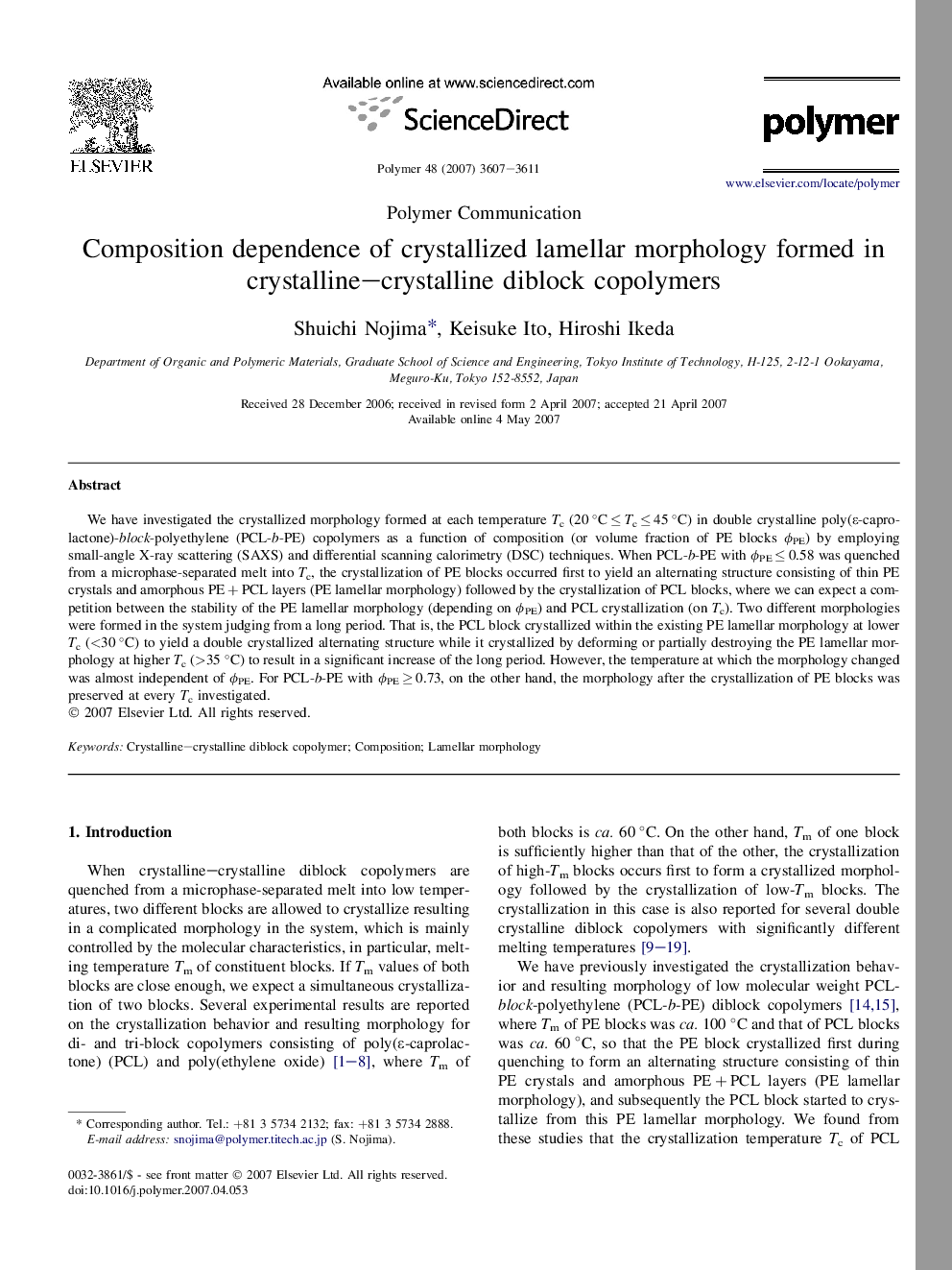| Article ID | Journal | Published Year | Pages | File Type |
|---|---|---|---|---|
| 5185925 | Polymer | 2007 | 5 Pages |
Abstract
We have investigated the crystallized morphology formed at each temperature Tc (20 °C â¤Â Tc â¤Â 45 °C) in double crystalline poly(É-caprolactone)-block-polyethylene (PCL-b-PE) copolymers as a function of composition (or volume fraction of PE blocks ÏPE) by employing small-angle X-ray scattering (SAXS) and differential scanning calorimetry (DSC) techniques. When PCL-b-PE with ÏPE â¤Â 0.58 was quenched from a microphase-separated melt into Tc, the crystallization of PE blocks occurred first to yield an alternating structure consisting of thin PE crystals and amorphous PE + PCL layers (PE lamellar morphology) followed by the crystallization of PCL blocks, where we can expect a competition between the stability of the PE lamellar morphology (depending on ÏPE) and PCL crystallization (on Tc). Two different morphologies were formed in the system judging from a long period. That is, the PCL block crystallized within the existing PE lamellar morphology at lower Tc (<30 °C) to yield a double crystallized alternating structure while it crystallized by deforming or partially destroying the PE lamellar morphology at higher Tc (>35 °C) to result in a significant increase of the long period. However, the temperature at which the morphology changed was almost independent of ÏPE. For PCL-b-PE with ÏPE â¥Â 0.73, on the other hand, the morphology after the crystallization of PE blocks was preserved at every Tc investigated.
Keywords
Related Topics
Physical Sciences and Engineering
Chemistry
Organic Chemistry
Authors
Shuichi Nojima, Keisuke Ito, Hiroshi Ikeda,
